
BY DR. RAVINDER PALL SAINI
INDIAN FOREST SERVICE ( RETIRED)
MEMBER, BOARD OF ADMINISTRATION
FOREST RESEARCH UNIVERSITY
DEHRADUN
DEHRADUN, 21 APRIL 204:
“ Whoever has learned how to listen to trees no longer wants to be a tree. He wants to be nothing except what he is. That is home. That is happiness.” ― Herman Hesse, Bäume. Betrachtungen und Gedichte
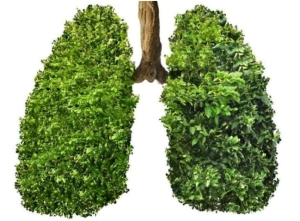
Trees are sanctuaries. Whoever knows how to speak to them, whoever knows how to listen to them, can learn the truth. They do not preach learning and precepts, they preach, undeterred by particulars, the ancient law of life.
A tree says: A kernel is hidden in me, a spark, a thought, I am life from eternal life. The attempt and the risk that the eternal mother took with me is unique, unique the form and veins of my skin, unique the smallest play of leaves in my branches and the smallest scar on my bark. I was made to form and reveal the eternal in my smallest special detail.
A tree says: My strength is trust. I know nothing about my fathers, I know nothing about the thousand children that every year spring out of me. I live out the secret of my seed to the very end, and I care for nothing else. I trust that God is in me. I trust that my labour is holy. Out of this trust I live.
They are wiser than we are if we do not listen to them. But when we have learned how to listen to trees, then the brevity and the quickness and the childlike hastiness of our thoughts achieve an incomparable joy.
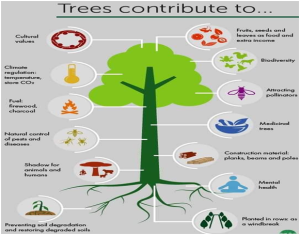
TREES ARE POEMS THAT EARTH WRITES UPON THE SKY:
Trees are the oldest living organisms on Earth so grow more trees and protect what we have. We cut them down and turn them into paper, furniture, building materials etc. This we may record as our emptiness as alternatives are there and we must work more for their development.
Save Tress – Plant Trees – Save Future:
Trees are like breathing lungs for the earth. They keep the earth’s temperature balanced by releasing oxygen into the atmosphere.
Trees provide life to humans, consuming carbon dioxide to release oxygen. Carbon dioxide traps heat in our atmosphere and makes the earth warmer, whereas oxygen keeps the earth cool and provides the air we breathe.
Trees provide food to humans and herbivorous animals in the form of fruits and vegetables and shape a dependent ecology for the earth.
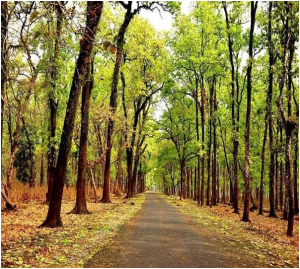
Trees are resourceful as they provide a lot of inputs for various industries like paper, gums, fibre, wood, rubbers, etc.
Trees offer shelter, shadow, and life to wildlife and a cold breeze to humans.
Trees are functioned to produce micro water droplets when they release oxygen that causes the atmosphere to cool down, resulting in the clustering of clouds, and the ultimate result is rain. The process helps the earth to function as a self-balanced and self-sufficient planet, making it a habitat for humans.
Planting more trees adds more to the beautification of the earth.
Trees help us prevent air pollution and soil erosion. Trees are structured with strong roots lying deep into the soil. When the water pressure increases due to heavy rains, the root holds the soil, or the waters force the ground to dislocate to river streams.
Climate change is one of the biggest concerns; the plantation of trees helps to balance the climate of a region and prevent sudden climate disturbance.
A wise man said, “save trees, save lives!”. It holds true in our life; Deforestation has contributed much to global warming. Saving trees could mean more breathing air means more life.
IMPORTANCE OF TREES:
One tree provides enough oxygen for 5 people. Just 30 trees can absorb our full annual carbon production. Trees filter our water and soil, and fight erosion. They increase neighbourhood desirability and escalate property value up to 20 % and can save energy and money for heating and cooling up to 15 %.
Trees are of invaluable importance to our environment and to human wellbeing. They give us clean water to drink, air to breathe, shade and food to humans, animals, and plants. They provide habitats for numerous species of fauna and flora, firewood for cooking and heat, materials for buildings and places of spiritual, cultural, and recreational importance. Trees are so important for the global environment and the health of the species that live there, and they need our unconditional care and protection.
- An average tree in an urban city area generally lives for only about 8 years, not more. Not that’s nothing for life expectancy.
- A single tree is good enough to take in as much carbon as a car emits on running 26000 miles.
- Over 60000 tree species are known to mankind. Most of them are found in three countries namely Brazil, Columbia, and Indonesia.
- This is interesting. Trees also help increase real estate prices. Plots and houses that are surrounded by trees usually fetch 15-18% more.
- Trees drink massive amounts of water. An average tree takes in about 2000 liters of water a year.
- Trees reduce the ‘Greenhouse’ effect by removing carbon dioxide from the air and releasing oxygen. Each year a mature tree produces enough oxygen for 10 people.
- Trees are also an effective sound barrier and can limit noise pollution. Recent research shows that trees also help reduce the stress of modern life.
- Trees in themselves benefit the environment and the landscape, but they are also an integral part of the ecosystem providing benefits to wildlife and biodiversity. Trees, especially older or veteran trees and those in groups or woodlands, provide habitats for native ground flora such as bluebells and fauna, particularly bats, red squirrels, and invertebrates.
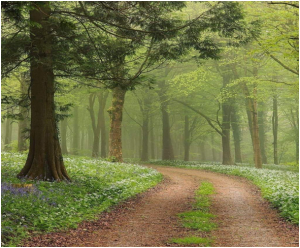
Few significant facts about Trees:
Most of us are not cognisant of these. Perhaps after reading this, some of us might take up the cause and help preserve the green.
- Trees Regulate The Water Cycle:
The water cycle is the process by which water falls to the ground as rain. It’s then absorbed by trees and other plants, then released back into the air as transpiration.
Continuously ‘drinking’ whenever it can, a single tree will typically release around 250- 400 gallons of water back into the air every single day. Therefore, trees are crucial for maintaining optimum levels of humidity in our air. They also ensure that the water cycle (which provides the fresh water we rely on to stay alive) remains in balance.
The world has established a natural rhythm when it comes to the water cycle. Deforestation severely disrupts this cycle and can put our supplies of fresh water (which makes up just 3% of the planet’s total water) in threat.
- Trees Provide Jobs:
All the way from rainforest care to tree planting. From fruit harvests to biological and botanical research. Trees provide a multitude of jobs. For many small, often rural communities, without trees there would be no way to sustain the local people. While it could be discussed that deforestation too creates jobs, this work is not sustainable in the long term. Once the trees are gone, the work too gets reduced. Forest conservation and reforestation make up most arboreal jobs in the world. We need to protect these roles for people whose livelihoods depend on it.
- Trees Are A Vital Habitat For Wildlife:
A varied range of birds, insects and mammals live in forest habitats. These organisms have adapted to their environment over centuries and are reliant on it. While the larger or more exciting animals (elephants, tigers, gibbons, macaques, sunbirds, or hornbills) may be the first that come to mind, a seemingly simple tree may well be home to hundreds or even thousands more creatures of a much smaller size. Snakes, frogs, millipedes, ants, termites, spiders, beetles, moths – all of them depend on the safety of their forest home.
Trees build habitat. It has been estimated that if deforestation continues at its current rate, it will result in the extinction of around 28,000 different species in the next 25 years. Many of them would disappear without ever having been discovered.
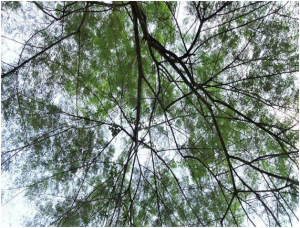
- They Improve The Soil Quality:
Trees play a super important role in improving the quality of the soil around them in numerous ways. As part of their carbon filtering properties, they remove carbon and other noxious substances from the soil, allowing other plants to flourish.
Good quality soil should contain no more than 2% carbon. However, in heavily forested areas it can be as low as 0.05%. In fact, land that is surrounded by trees can double crop production thanks to the soil-purifying effect of trees. The better the yield, the less land is needed to feed humanity. Trees also contribute vital minerals to the soil by shedding its foliage and allowing it to decompose as mulch. In short: if we want good quality soil for agriculture and biodiversity, we need to look after our planet’s trees.
- Trees Prevent Soil Erosion:
The lands that have been deforested are much more vulnerable to desertification. Using their trunks and foliage, trees form a natural barrier to winds and floods. This barrier slows the forces of nature down and helps to prevent bad weather from becoming a natural disaster capable of devastating large areas.
Sundarbans in Bengal is one example where the focus is on planting mangrove trees.
These trees create a natural form of protection to the land and sustains a tiger population – only place in the world where tigers exist in mangroves.
Tree roots perform a vital function in holding the soil together, preventing it from erosion. In deforested areas, there is nothing to keep the soil in place or slow the speed of incoming winds or monsoons. A period of high winds or rain is then free to sweep away all the loose soil, turning the area into a quasi-desert.
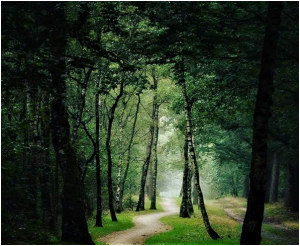
- Trees As A Food Source:
Sustainably grown, trees are a source of so many vital foodstuffs. It is well known that the world’s population would have more than enough to eat if everyone followed a vegan diet. We can get plenty of nutrients from trees alone. From nuts to fruits, to the syrup created from flowers and resins and the spices created from aromatic barks (cinnamon being one example). Trees are an amazing source of food for humans.
- Trees Contend Noise Pollution:
As well as combatting air pollution, trees have a role in combatting the negative impact of noise pollution. A major effect of urbanisation, transport and industrialisation, noise is not just annoying for humans – it can have a devastating effect on wildlife. Not only can the noise pollution caused by humans interfere with an animal’s sonar and navigation systems, but it can also disrupt whole ecosystems. For example, some breeds of nesting birds will not nest in habitats that are undesirable due to noise. The foliage of trees has a muffling effect, diminishing the level of sound that reaches it. Wildlife is buffered from the noise pollution that we, as humans, create.
- Trees Resist Light Pollution:
As well as muffling sound, tree foliage also provides a barrier against unwanted light pollution. Like noise pollution, as well as being annoying, city lights can disrupt the habits of animals such as birds and moths (as well as nocturnal mammals like badgers).
They rely on the daily cycles of light and darkness to regulate their internal clock, navigate, and source food. Newly planted trees have helped reduce the effect of pollution all over the world.
- Trees Fight Climate Change:
One of the reasons for changing global warming and climate change is the levels of carbon dioxide in our atmosphere. Carbon dioxide is a ‘greenhouse’ gas, known for its heat-trapping properties. In a rapidly warming planet, the excessive levels of carbon dioxide that humans are producing is literally trapping the heat in our atmosphere.
As a tree grows, it absorbs carbon dioxide from the air through a process called photosynthesis. It stores the carbon as wood and releases oxygen molecules. For this reason, forests act like a giant filter. They remove the greenhouse gas from the air and only disperse it back into the air if they are burned or decomposed back into the earth.
This is why the effects of deforestation are two-fold. Not only are nature’s CO2 filters being removed, but they’re often burned afterwards, releasing any carbon they were storing back into the atmosphere.
Once a tree is fully grown, it removes less carbon dioxide from the atmosphere as it is no longer creating as much new wood: the additional carbon isn’t necessary. With responsible woodland management, older trees can be carefully harvested to absorb the maximum amount of carbon from the air – creating a ‘carbon sink’.
Trees are vital in the fight against climate change. Without the world’s forests, we wouldn’t stand a chance.

- Trees Create Oxygen:
There is truth in the saying that the forest is the green lung of our planet. We’ve already covered the way that trees remove CO2 from the air. It’s an additional bonus that they also produce oxygen as a biproduct. So not only do trees remove unhealthy air, but they also actually replace it with clean air. Contemplating about two-thirds of the human body is made up of oxygen, that’s pretty good news for us! Without oxygen, it would be game over for the human species. And, since photosynthesis is the largest creator of oxygen, we should probably make sure we’re taking good care of our trees.
- Trees Restores good health:
You don’t need to be a scientist to notice the difference in the way you feel when walking through a forest. One might’ve felt stressed out, worrying about work and your concerns but as soon as you enter the forest, it’s like entering a different world. You become calmer, your breath deepens, and your mind isn’t racing as much. Trees heal our body, mind, and soul.
Trees are our lifeline. What most of us know is that they absorb carbon dioxide and exhale oxygen which is important for our survival. Despite knowing the great truth, we do nothing to preserve them. Let’s endeavour to plant, save, and conserve these most invaluable trees all around the world.

Advertisement:





























Add Comment